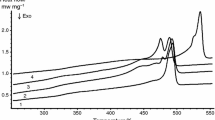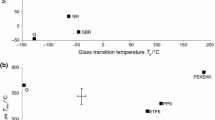Abstract
Comparing own measurement values with the literature or textbook data is an established procedure for the correct interpretation, and final evaluation of the results obtained. For some spectroscopic measurement techniques such as mass spectrometry or Fourier transform infrared spectroscopy, online libraries have long been established, which allow for library searches within the evaluation software and for comparisons of the measurement data with spectra collections archived in databases. These are either available on the Internet free of charge or can be purchased from instruments suppliers or scientific organizations. For the methods of thermal analysis, such as thermogravimetry, dilatometry, or differential scanning calorimetry, such software-based libraries had not been available thus far. The “Identify” database of the NETZSCH Proteus ® evaluation software now offers—for the first time—the ability to conduct software-based library comparisons in thermal analysis. With the example of two polymer samples, it will be shown that identification of both pure substances and mixtures can be carried out with the help of “Identify.”











Similar content being viewed by others
References
Liptay G, editor. Atlas of thermoanalytical curves (TG-, DTG-, DTA-curves measured simultaneously). Akadémiai Kiadó: Budapest; 1976.
Kaisersberger E, Möhler H. DSC on Polymeric Materials. NETZSCH annual for science and industry, volume 1. Selb: ©NETZSCH-Gerätebau GmbH, D-8672; 1991.
Kaisersberger E, Knappe S, Möhler H. TA for Polymer Engineering. NETZSCH annual for science and industry, volume 2. Selb: ©NETZSCH-Gerätebau GmbH, D-8672; 1993.
Kaisersberger E, Knappe S, Möhler H, Rahner S. TA for polymer engineering. NETZSCH annual for science and industry, volume 3. Selb: ©NETZSCH-Gerätebau GmbH, D-8672; 1994.
Schönherr R. TGA-FTIR Atlas Elastomere. D-Burgdorf: W.K. Schönherr; 1996.
Schindler A. Automatic evaluation and identification of DSC curves, Plastics Engineering. 2014. www.plasticsengineering.org/node/8443.
Hemminger WF, Cammenga HK. Methoden der Thermischen Analyse. Heidelberg: Springer; 1989.
Deutsches Institut für Normung, DIN 51005. “Thermische Analyse (TA)—Begriffe”.
Füglein E, Léon A. In: Léon A, editor. Hydrogen Technology—mobile and portable applications. Chapter 16b: High-pressure DSC. Heidelberg: Springer; 2008. p. 501–521.
Deutsches Institut für Normung, DIN EN ISO 11357. “Kunststoffe—Dynamische Differenz-Thermoanalyse (DSC)”, parts 1 through 8.
Thermal properties of polymers. http://www.netzsch.com/TPoP.
Thermal properties of polymers app. http://www.netzsch-thermal-analysis.com/de/materialien-applikationen/polymere/erste-netzsch-app.html.
Author information
Authors and Affiliations
Corresponding author
Rights and permissions
About this article
Cite this article
Fueglein, E., Kaisersberger, E. About the development of databases in thermal analysis. J Therm Anal Calorim 120, 23–31 (2015). https://doi.org/10.1007/s10973-014-4381-3
Received:
Accepted:
Published:
Issue Date:
DOI: https://doi.org/10.1007/s10973-014-4381-3




